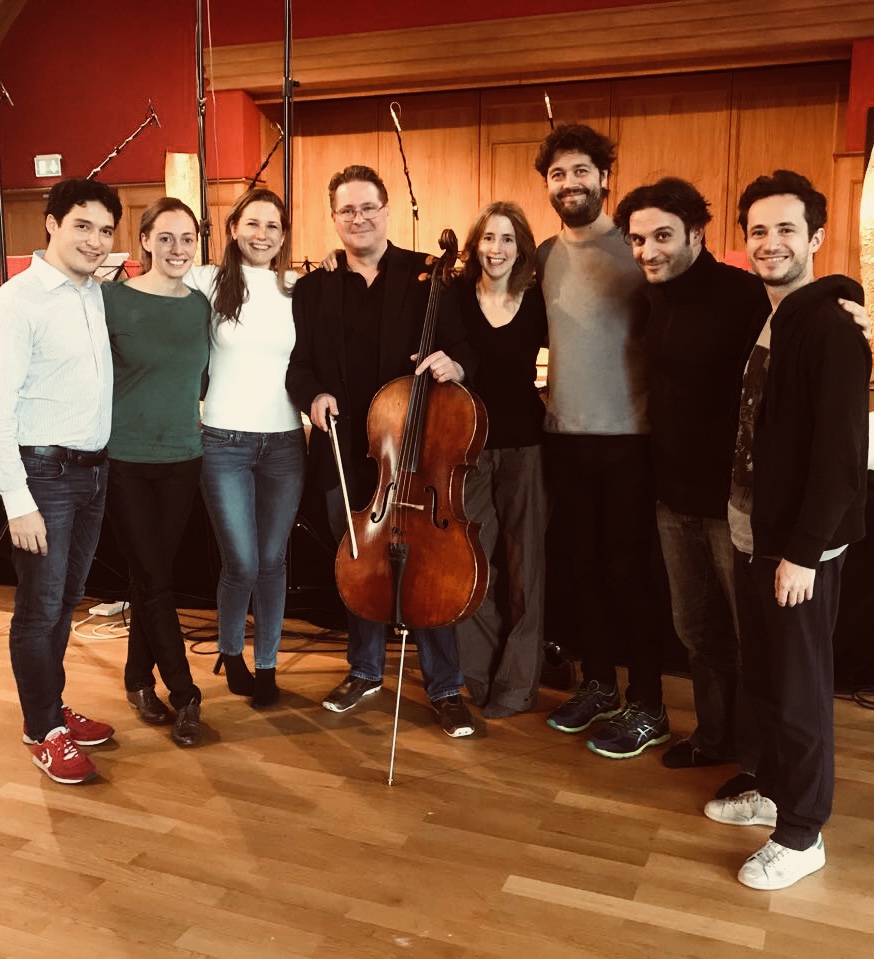“Absolutely stunning”
“Frang bursts boundaries between two geniuses”
“Compelling playing from a dedicated violin soloist and Friends”
Diapason d'or de l'année 2018
in the Concerto category
Grand Prix du Disque 2018
Vilde Frang talks about
her New recording of works
by Enescu and Bartók
What inspired you to put together this programme of works from different genres?
First and foremost, Enescu’s Octet for strings and Bartók’s first violin concerto are firm favourites in my repertoire. While the concerto is a piece with strong chamber music qualities, the Octet demands a soloistic attitude from every participant. I perform both quite frequently and I am excited to bring them together on a recording.
They both date from the early 20th century and were written when the composers were very young - Bartok was in his early twenties and Enescu in his late teens. The concerto was dedicated to a violin prodigy, while the Octet was composed by a violin prodigy. And each work was dismissed and neglected for decades.
How would you define the special characteristics of Bartók and Enescu?
The two composers have a lot in common … They were born in same year, and – as the map of Europe was drawn then – in the same country. Enescu came from the Carpathian region in Romanian Moldavia, a European crossroads and a melting pot of cultures, traditions and influences – Arab, Ottoman, Mongolian, Greek, Tatar and Slavic. Bartók, born in Transylvania in Hungarian Romania, collected and popularized thousands of folk songs of Hungarian, Romanian, Slovak, Bulgarian, Balkan and Turkish origin.
Bartok and Enescu had a mutual admiration and performed together in recital several times. They both also lived and died in self-imposed exile – Bartók in America, Enescu in France – but they remain two of the 20th century’s greatest nationalist composers, and major contributors to their countries’ culture and art.
READ THE FULL INTERVIEW
To what degree does nationalism characterise this music?
The Enescu Octet is the better example of nationalism: one notices the influences of Romanian liturgical music – which is broadly similar to that of the Russian Church, but with greater Byzantine and Greek influences – and Romanian folk music, which is a composite of Arabic, Slavic and Hungarian elements. Enescu described the essence of Romanian folk music as “dreaming ... with the special character of sadness in the midst of happiness, and a tendency towards melancholy, towards minor keys’’.
The Bartók violin concerto, on the other hand, is unique in revealing the tender, loving side of the young composer, something one might not normally associate with him. It was, in Bartók’s words, ‘’a confession’’ and a portrait of the prodigious violinist Stefi Geyer, with whom he was romantically involved. He dedicated the concerto to her with a poem, containing the line ‘’No stars are as far apart as two human souls’’. Geyer did not reciprocate Bartók’s feelings and she never performed the concerto. It was only published in 1956, a year after Enescus death and over a decade after Bartók himself had died.
What special importance does Enescu hold for violinists?
Enescu regarded himself a composer first and foremost and considered it a kind of curse to be regarded as a violin virtuoso. He studied composition with Fauré and Massenet, with Boulanger and Ravel as classmates. He was a fine cellist – allegedly able to give ‘a first-rate account of Lalo cello concerto’, although he would only play the cello publicly in a string quartet, not as a soloist. Pablo Casals proclaimed him ‘‘the greatest musical phenomenon since Mozart’’. As a conductor, he was even considered for the position as Toscanini’s successor at the New York Philharmonic. He had a voice that once enabled him to substitute for a bass singer in rehearsals while conducting the third act of Wagner’s Siegfried, singing the role of Wotan from his podium. In addition, he had an extraordinary memory – he could sit down at the piano and play from any point in a Beethoven symphony, Wagner’s Ring Cycle or Stravinsky’s Rite of Spring. Alfred Cortot claimed that Enescu was a better pianist than he himself was.
Enescu’s versatility makes him a titan among violinists in my view … and on top of that comes my pride at sharing a birthday with him! His playing was aristocratic, full of purity and nobility, yet there was also an edge of temperament, even wildness that adds a unique allure to his playing. He was taught to play by roaming lăutaris, gypsy musicians, in his home village in rural Romania, and that would forever characterise his playing. Yehudi Menuhin, who studied with Enescu, said that: “For me, Enescu will remain one of the true wonders of the world. His strong roots and his noble spirit come from his own country, a country with no match in beauty.”
What place does chamber music hold in your life?
Chamber music is like a vitamin injection to me. It creates a healthy balance to include festivals and chamber music projects on a regular basis. My choice of ‘desert island’ music would definitely be a chamber work of some kind – and if I had to choose one single piece to play on a desert island, I would probably bring along Enescu’s Octet.
Enescu started working on it aged only 17, one year older than Mendelssohn was when writing his famous octet, but it took him a year-and-a-half of painstaking work to complete it. As he later recalled: “No engineer launching his first suspension bridge across a river can have agonised more than I did as I gradually filled my manuscript paper with notes!” When he completed the work in 1900, the prestigious concert promoter Edouard Colonne agreed to programme the piece but unfortunately, the players were not up to the task and the piece ended up being judged ‘‘too incomprehensibly modernistic’’. Much to Enescu’s bitter regret the concert was cancelled after five rehearsals! The premiere finally took place nearly a decade later, in 1909, with the composer conducting.
It is a symphonically-conceived, fantastique work – ‘’as one would imagine chamber music by Berlioz’’, according to Enescu. It offers equal challenges to all the musicians involved, both as soloists and as ensemble-players, which makes it such an adventure and so rewarding to perform. It meant the world to me to gather together some truly great and very dear colleagues of mine for this recording.









